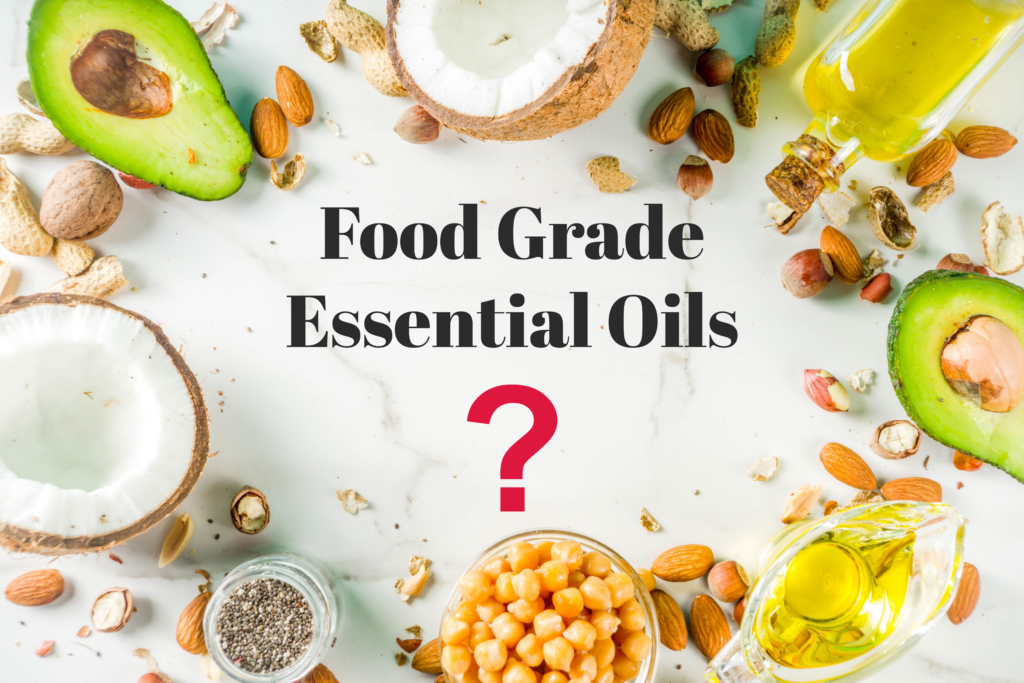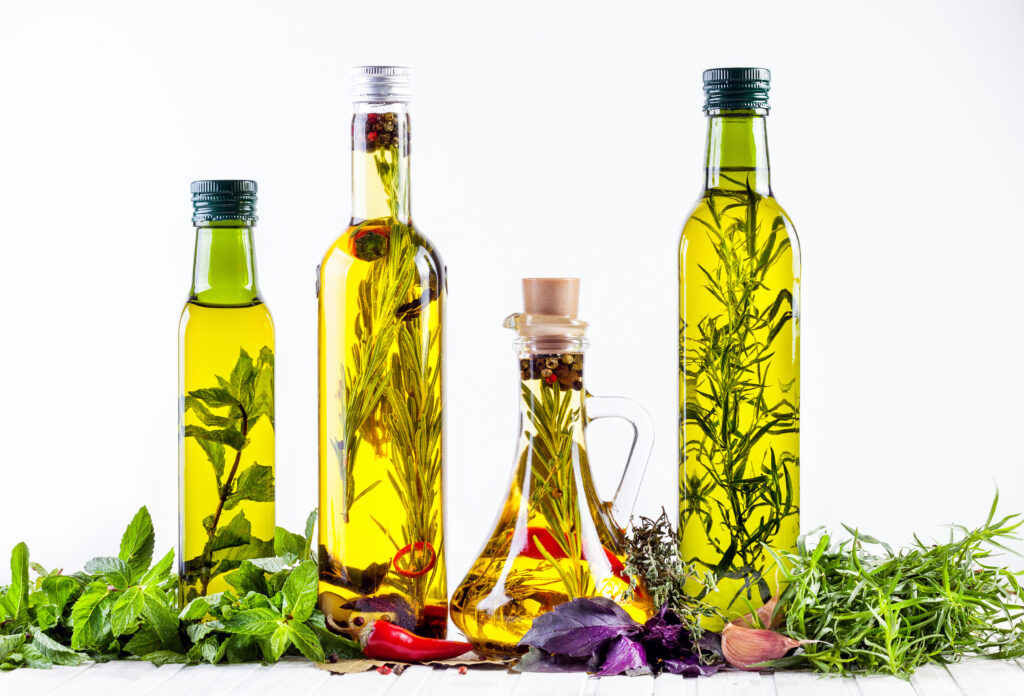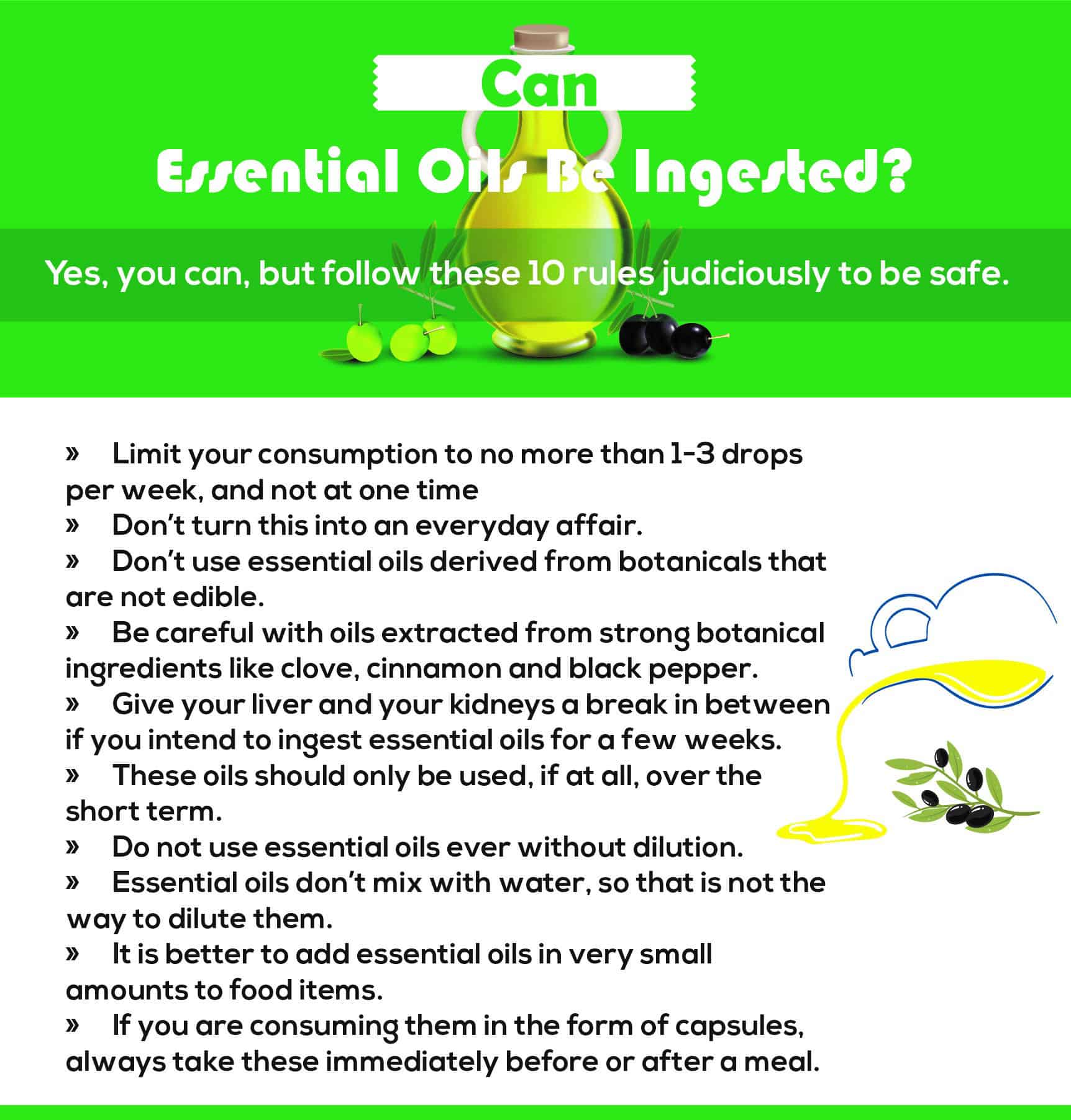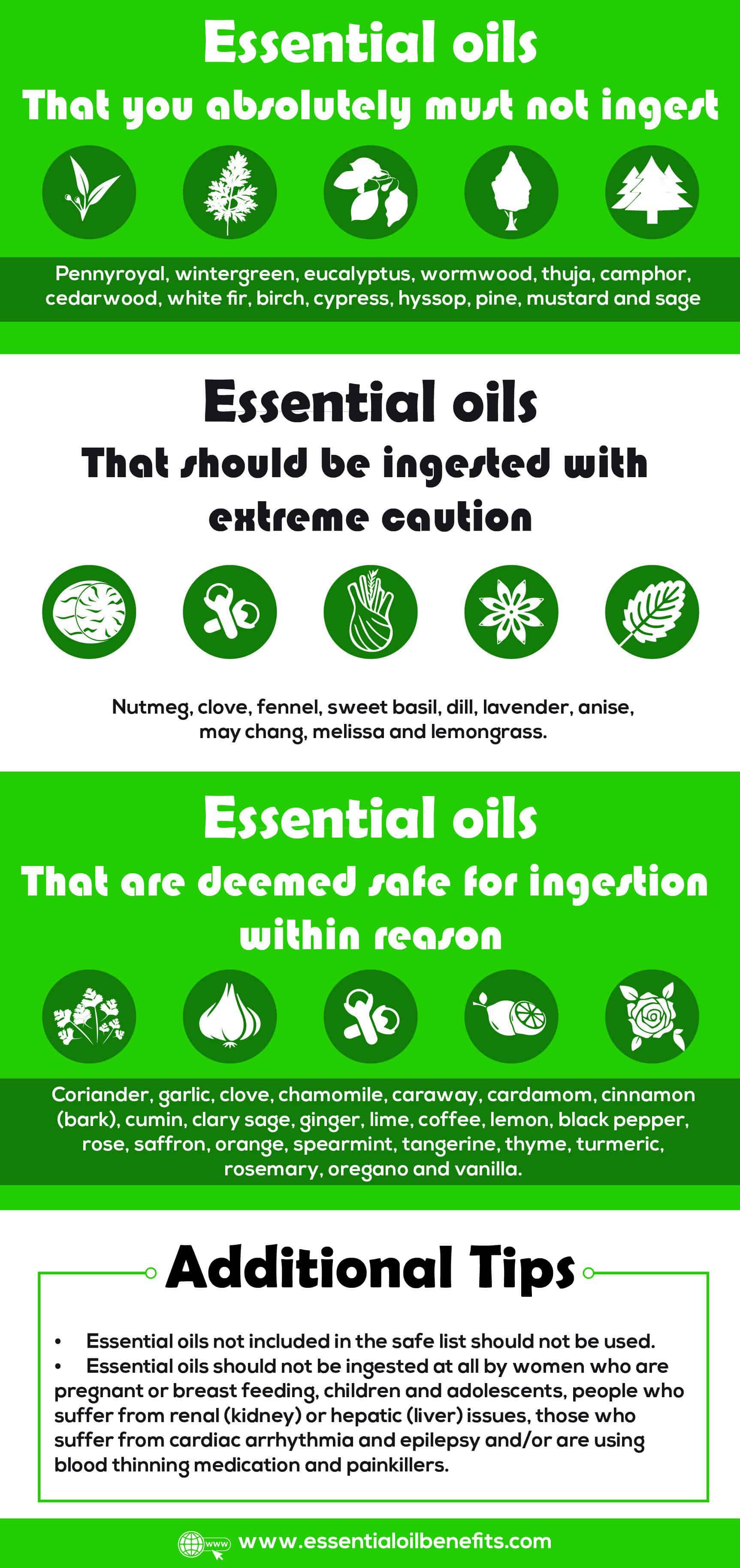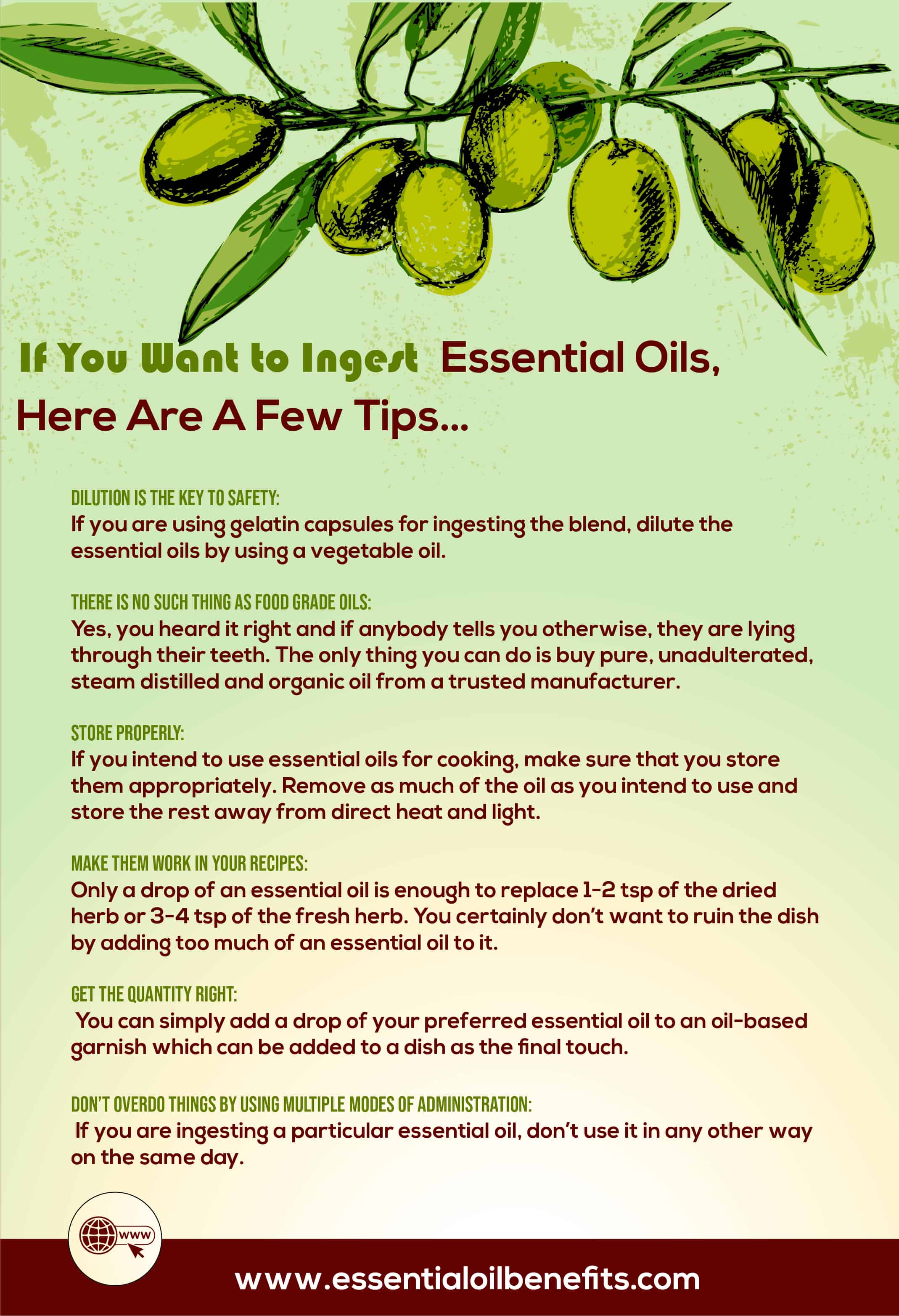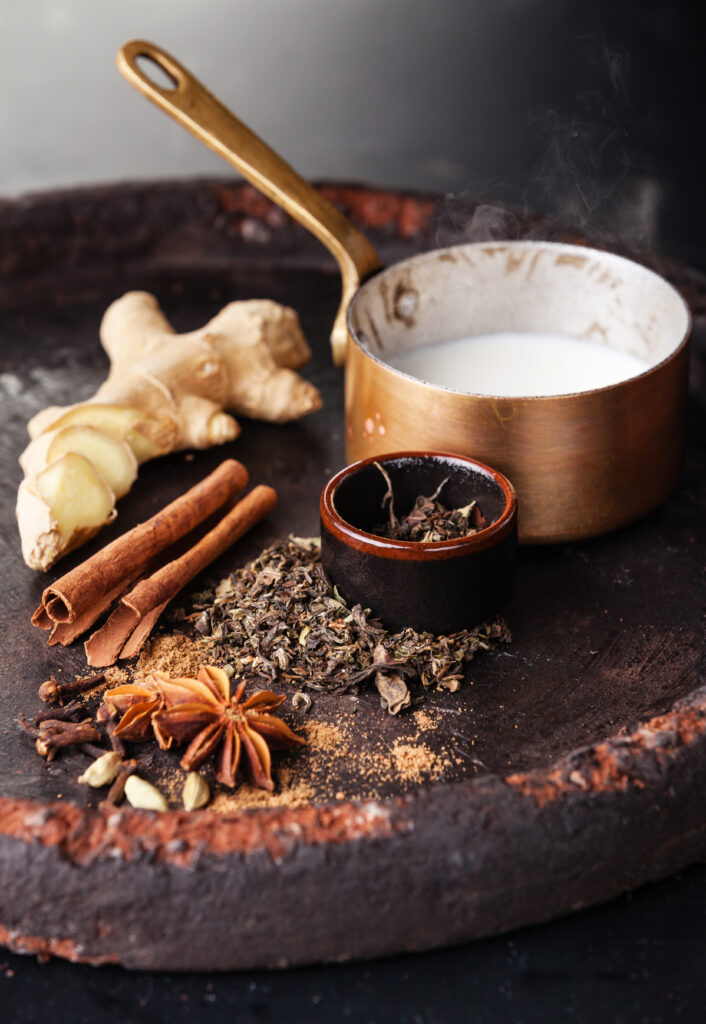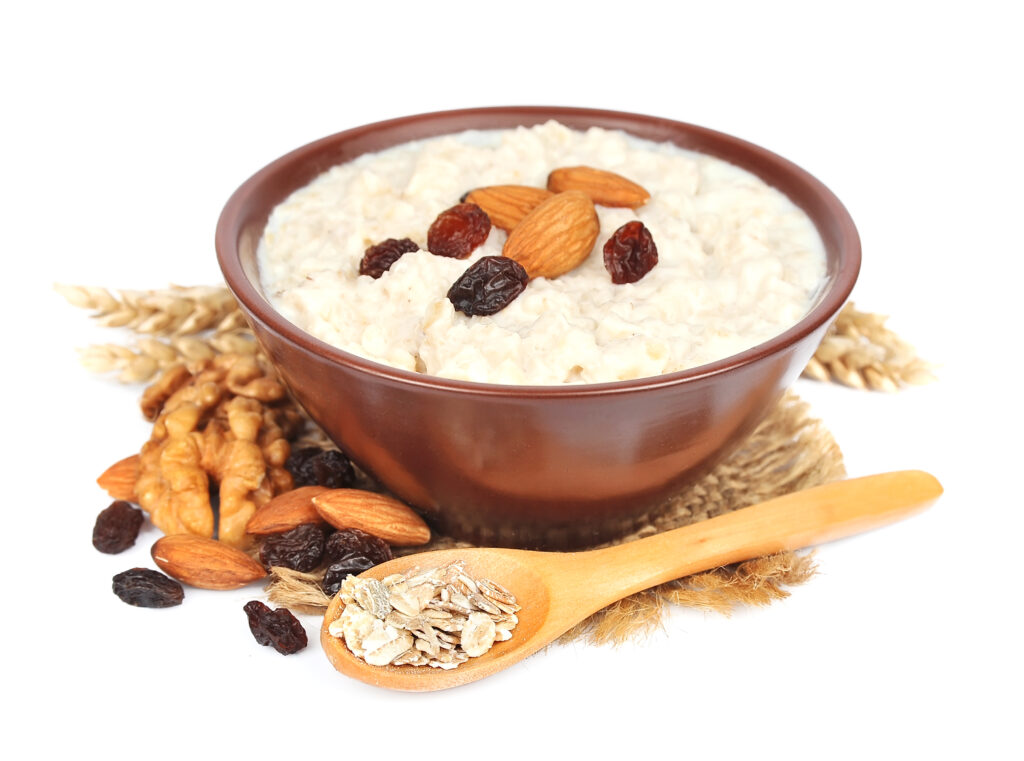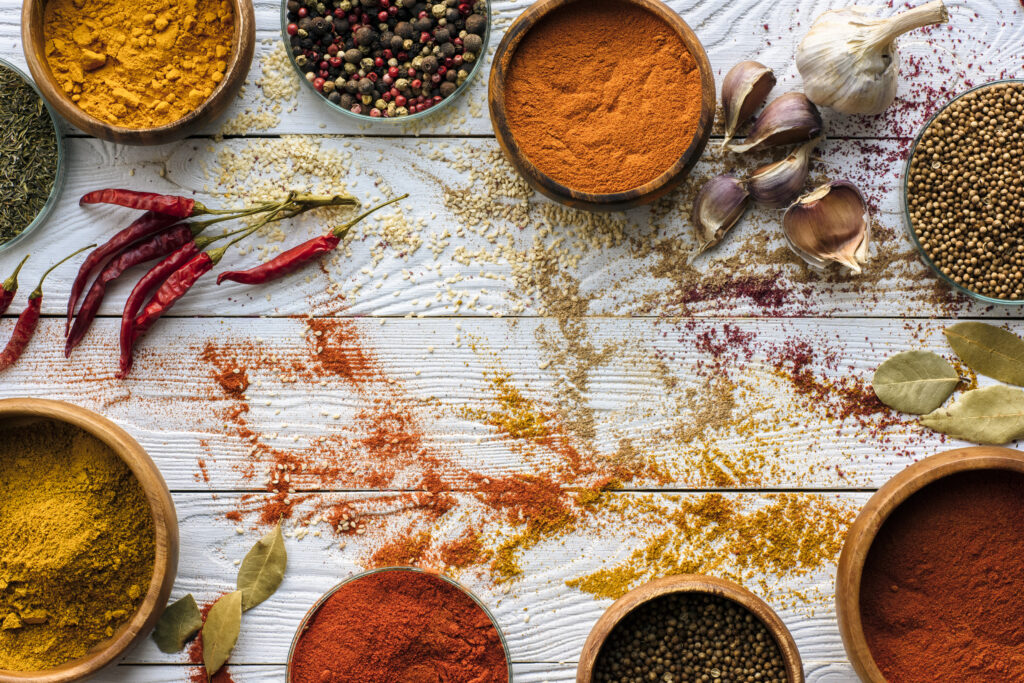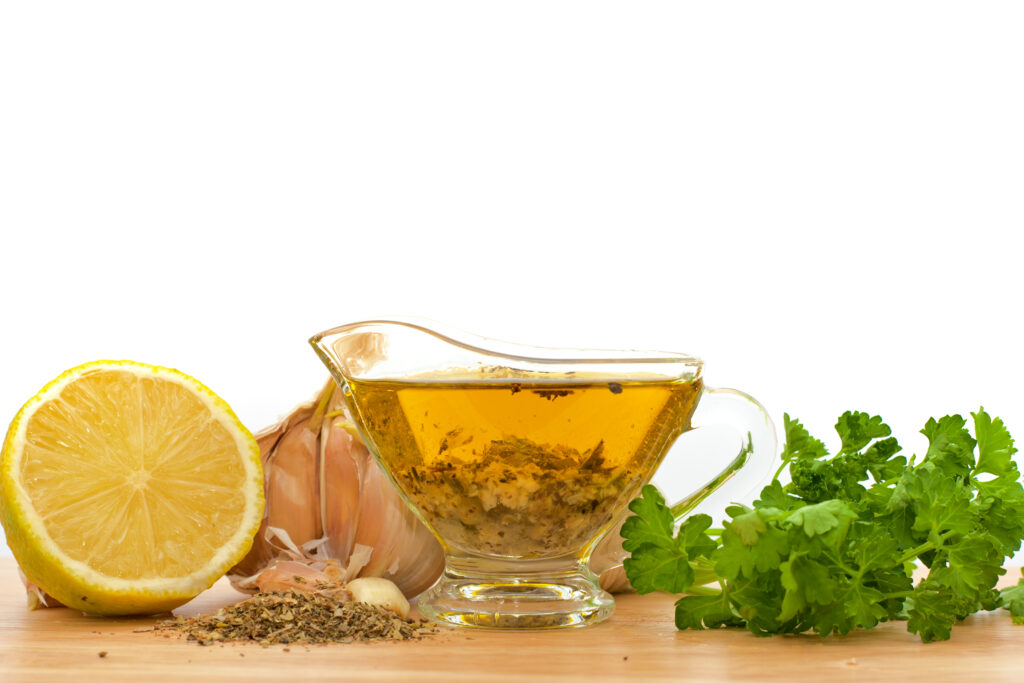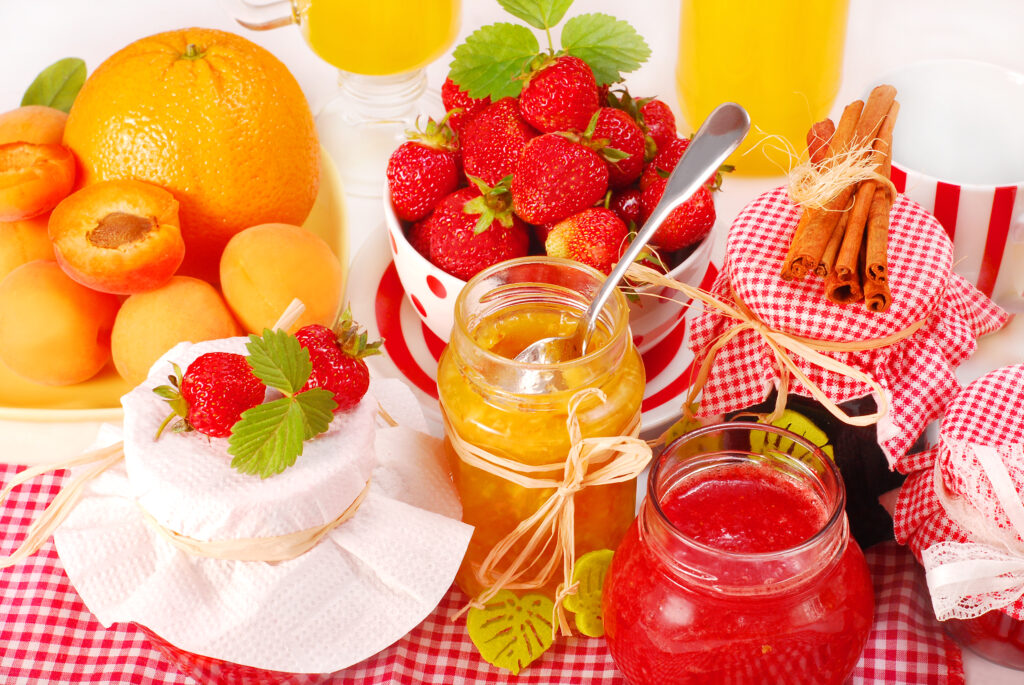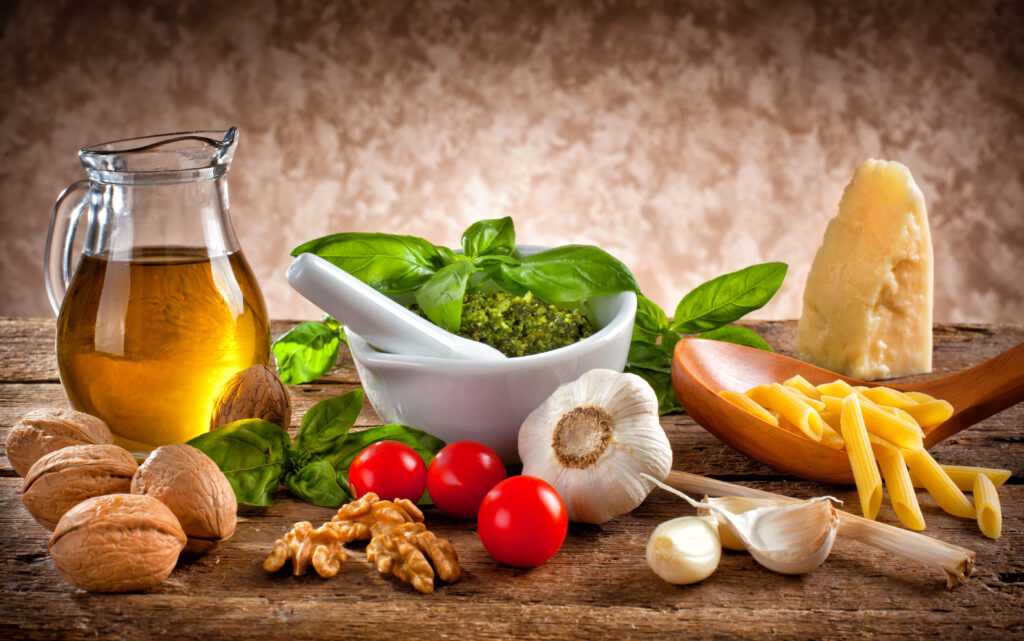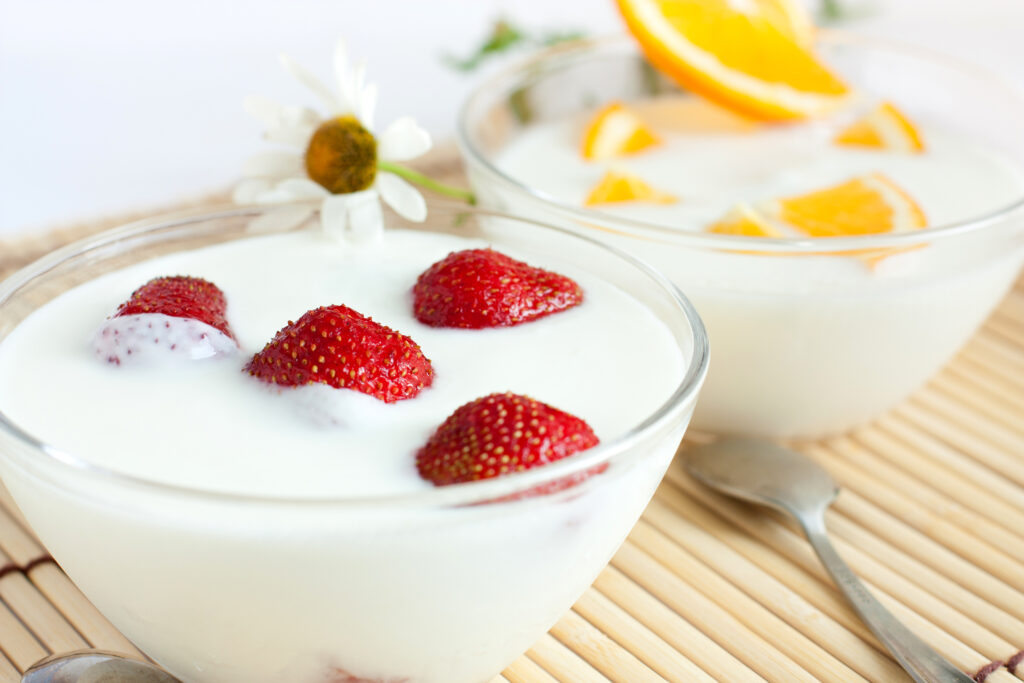Woohhh! What is that ear splitting sound and all that pandemonium?
Wait, I know! That’s the cacophony of the war horns being sounded and the chaos of battle lines being drawn by essential oil enthusiasts!
Yes, that’s what happens when you bring up the topic of essential oil ingestion. A much debated subject that has divided the naturopathic community for years, it remains shrouded in controversy and contradictions, despite the growing interest in essential oils.
Now, if practitioners of modern medicine were to pooh-pooh claims involving essential oils and natural ingredients, nobody would bat an eyelid. After all, those guys are not willing to so much as consider the possibility of these extracts being beneficial.
But, when you have proponents of essential oils vociferously criticizing the use of these aromatic extracts in a certain way, it is bound to grab eyeballs and create confusion.
Plus, you can always rely on vested parties to add not just two, but twenty of their own cents to the argument and create a bigger mess. Yes, I am talking about the sellers of the “so-called” food grade essential oils here.
The striking contrast in views can be baffling even for those who have been using essential oils for years, let alone people who have just bought their first few oils.
While one side claims that the ingestion of essential oils is the ultimate way to harness their antioxidant potential, the other side states that the hepatotoxic nature of these extracts can does way more harm than good. So, which side has got it right?
Well folks, I am going to settle this once and for all today and while I am at it, I am going to answer all other questions that you may have about using essential oils internally.
I am Olivia your guide through the aromatic world of essential oils and this is my Exposé on Food Grade Essential Oils!
Sit tight because we are going to bust through several myths and half-truths here. Without further ado, let’s get straight to the point.
Is It Safe To Ingest Essential Oils Or Not?
Yes and No! I assure you the ambiguity is not deliberate and certainly not meant to confuse you. Let me explain this further. On any given day, you end up consuming at least a drop of essential oil. No, not of one kind but a drop that combines the aromatic extracts of several plants.
Every time you add herbs and spices to your food, you are essentially adding a small amount of essential oil to the dish because these aromatic extracts are responsible for the characteristic flavor and fragrance of spices and herbs.
What’s more, all the condiments and sauces in your refrigerator, in all likelihood, have one or more essential oils in them. Baked goods, confectionary, candy cane, soft drinks and just about every product that has the term “natural flavor/flavoring” in the ingredients list has essential oils in it.
All those infusion teas and even your trusty toothpaste with its fresh minty taste, these and several other products that you use and consume on a daily basis have some amount of essential oils in them. So, it would be safe to say that not a day goes by when you don’t actually ingest some amount of essential oils.
This fact begs the question that if essential oils are so toxic, why aren’t we all dead?
Well, the difference between poison and potion is all about quantity! And, let me tell you, it’s not just essential oils that follow this principle. Most existing medication finds its roots in natural compounds, which are toxic if overused.
Two examples of this include salicilin from the willow plant, which paved the way for the creation of aspirin and the painkiller morphine, which initially came from poppy plants.
Let alone plant compounds, even viper and puffer fish venom have found a place in modern day drug therapy as potent painkillers. To cut a long story short, used in the right amount a lot of compounds that are poisonous help to alleviate health problems.
So, why can essential oils not have the same mechanism of action? Actually, they do! And that is why, I am still alive and writing this article for you despite consuming my daily drop of essential oils from different food items.
The problem is not with essential oils but with the half-baked advices out there!
- “Put one drop of lavender essential oil on the wound.”
- “Place a drop of peppermint essential oil under your tongue.”
- “Add a drop of lemon essential oil to a glass of water.”
Ever come across such precious gems of advice? I sure have and plenty of them too! It’s all bull crap and dangerous bull crap at that folks! Unfortunately, this is the culmination of what can only be called a game of Chinese Whispers. It started off as sound advice on ingesting essential oils, which went something like this:
- Use with extreme caution and discretion.
- Under the supervision of a trained herbalist.
- Only in case of specific ailments that require a high dose of certain bioactive compounds.
- For a short period of time.
But, after going through overenthusiastic and ill-informed bloggers as well as unscrupulous MLM marketers, we have come to the point where it’s now become safe to gulp down several drops of esoteric essential oils every day for years on together.
Will this approach cause harm?
Hell, Yes! Think of it this way – A warm or even hot bath is very soothing, but ever tried bathing with boiling hot water?
We eat off plates that are washed with soap, which means that some of the compounds from that soap find their way into our food. These don’t harm us, but this certainly does not mean that we can guzzle down liquid dish wash soap to keep our innards clean. Do you see where I am going with this?
And let me add to that explanation by saying that it’s not just about ingesting essential oils, even when using them topically or for inhalation, there is a safe threshold and you have stay within that upper limit. The only time people have problems with essential oils is when they are not used as they should be.
But why does quantity matter so much when dealing with essential oils?
In their natural form, essential oils account for just 1% or less of the total composition of the botanical raw material they are derived from. A fairly accurate manufacturing average is about 200 lbs. of botanicals for 1 lb of essential oil. For instance, it takes about 260 lbs. of peppermint to get 1 lb of peppermint oil. Similarly, it takes about 150-200 lbs. of lavender blooms to get 1 lb of lavender oil.
Although the specific gravity of essential oils varies greatly, it roughly works out to 40 drops of oil per pound of raw material. With that as our stating point, let’s do some more number crunching.
Now, if you have picked up a peppermint leaf, you know how light it is. So, 1 lb of peppermint leaves would work out to about 40 cups. So, that is a drop per cup. But, this figure can vary greatly, depending on the oils chosen. For instance, a pound rose petals will get a mere 2 drops of rose essential oil. I hope you get the picture here.
Now, tell me this – do you normally consume 1 cup of peppermint leaves or 20 cups of rose petals or ½ cup of clove buds each day? I am sure I got a resounding “no” in response to that question.
Then, why would you want to do that with peppermint or worse yet with clove oil? In fact, most people would not use that much peppermint unless they are cooking for 8-10 people, which means that each person would get 1/10th of a drop of peppermint oil. Plus, the fact that it goes down with a lot of other edible ingredients makes it easier on the gastric lining.
And, peppermint is in no way the strongest of all essential oils. Let me tell you about my personal experience with cinnamon oil. As a noob, I was very keen on harnessing the antioxidant potential of these extracts. So, I came up with the brain storm of adding a drop of cinnamon essential oil to my green tea and I really did go with just a teeny-tiny drop of the oil. But, all it took was the first sip for me to realize how stupid I had been.
My lips were on fire, as was my mouth and throat and it just took a few seconds to feel that reaction. As I sit here typing this piece, I sure am glad that I did not cross the line between bravery and stupidity by gulping down the remaining tea.
I learnt 2 things that day – never take these oils for granted and never underestimate their potency or their ability to do harm. After that experience, I spent years studying these oils and their administration in various forms as well as actually using them in various ways, and that is what equips me to write this piece.
It’s also a matter of which essential oil you are talking about!
OK, we have discussed the importance of quantity when using essential oils orally. So, should we just go ahead and try a drop of wintergreen or perhaps camphor? Not unless you have taken a shine to the cute doctors in the ER. But, the endeavor would be futile because you will likely end up there in a coma or with organ failure or something worse.
You may have already read about the guy who suffered a near fatal heart attack after trying the famed morphine bomb blend that contains the essential oils of copaiba, balsam fir and frankincense and sometimes marjoram. Do you know how much of this concoction, they are asking people to take?
Try 4 drops each of the blend in a gel capsule, every 6-8 hours. No wonder this guy got so sick. I am surprised he is living to talk about his ordeal.
No, I am not saying that the essential oils caused the heart attack because acute toxicity is rare in that quantity. But they may have exacerbated an existing condition.
Time for another common sense question – so, do you normally chew on frankincense or copaiba (both are resin) or perhaps on several pounds of balsam fir bark?
Come on guys, this is not about science nor knowledge about essential oils. It’s just common sense and logic! Why would you want to ingest the essential oil extracted from botanical material that you cannot/will not eat?
How Can Essential Oils Be Dangerous Internally If They Are Safe To Use Externally?
What I have discussed above is bound to have ruffled the feathers of a few essential oil fans. Well folks, I promise I love my oils just as much as you do and I also use them internally. But I refuse to play up their benefits or play down the risks associated with their use.
I know a lot of people will dispute my explanations by saying that we do use essential oils externally and through inhalation, which means these oils get into the blood stream. If they don’t cause trouble when administered as such, why would they lead to toxicity when used internally?
Once again, it’s all about quantity. When essential oils are used externally, the maximum allowed concentration is 5%, which can only be used over the short term. This works out to approximately 30 drops per 30 ml (600 drops) of carrier oil or 1 drop for every 10 drops of carrier oil. Now, the first thing to consider is that you would rarely use a single oil. Even if you are working with just 2 essential oils, that would bring the quantity of each oil to ½ drop per 10 drops of carrier oil.
When you apply the blend, you will rarely need more than 5 drops of it. So, what your skin gets is a mere 1/5 or 0.2 drop of each essential oil. Now, the actual transdermal absorption rate is a tiny percentage of this amount. A realistic guess would be 0.002 or 1/500 of each drop. You see how minuscule the amount is? Moreover, not all the active compounds in the oils make it past the first few dermal layers, which means that some of them never get to the blood stream.
Plus, those that do, don’t directly go to the liver, unless they contain compounds that are metabolized in the liver. Generally, most circulate through the system and are eventually purged out through the renal path. But, when you swallow these oils, all the compounds are absorbed into the blood stream and from there taken to the liver.
Depending on the oil used, your liver may not be able to stand that high a dose of bioactives. For instance, adding a few clove buds to a recipe does no harm to the liver but a drop or two of clove oil can cause damage.
But, hey the FDA says it’s safe to use essential oils!
How can I possibly go against the mighty FDA? Rest assured I am not refuting their claims; far from it. All I am doing here is interpreting their words for what they really are. Yes, the FDA has issued a list of GRAS (generally referred as safe) essential oils.
But, nobody said that you can ingest as much of these essential oils as you want and you’ll still be safe. Case in point is the inclusion of mustard oil, which is a strong neurotoxin used in chemical warfare. In all possibility, you must have had this oil in the last couple of days because it is frequently used in commercially made salad dressings, sauces and dips.
But, we are talking about a few drops added to several pounds of other ingredients. So, the bottle you buy has less than 1 drop of it and since you are not going to drink up from it, you have nothing to worry about. However, does this mean you can add a drop or two of mustard oil in a capsule and swallow it? That won’t be a game of botanical Russian roulette but “certain death”!
While some oils are quick to show their toxic effects upon ingestion, the damage caused by others builds over time. Since research is lacking on this front, there is no way to anticipate when the cumulative effects of the toxicity may hit you and how bad they will be. The way I see it, I’d rather be safe than sorry.
So, what’s the end word on the matter, can essential oils be used orally or not?
Yes, you can use essential oils orally, but in my experience, there are 10 rules that you have to follow judiciously if you want to be safe and get the promised benefits from these oils.
- Limit your consumption to no more than 1-3 drops per week, and this too should not be consumed at one time and should not be of just one essential oil (unless this is being done under the supervisions of a herbalist)
- Don’t turn this into an everyday affair.
- Don’t use essential oils derived from botanicals that are not edible.
- Be careful with oils extracted from strong botanical ingredients like cloves, cinnamon and black pepper.
- Give your liver and your kidneys a break in between if you intend to ingest essential oils for a few weeks.
- These oils should only be used, if at all, over the short term.
- Do not use essential oils ever without dilution.
- Essential oils don’t mix with water, so that is not the way to dilute them.
- It is better to add essential oils, in very small amounts to food items.
- If you are consuming them in the form of capsules, always take these immediately before or after a meal.
Essential Oils That Are Safe And/Or Unsafe To Ingest
Oils that you absolutely must not ingest:
Pennyroyal, wintergreen, eucalyptus, wormwood, thuja, camphor, cedarwood, white fir, birch, cypress, hyssop, pine, mustard and sage
Oils that should be ingested with extreme caution:
Nutmeg, clove, fennel, sweet basil, dill, lavender, anise, may chang, Melissa and lemongrass.
Oils that are deemed safe for ingestion within reason:
Coriander, garlic (very small quantities), clove ( very small quantities), chamomile, caraway, cardamom, cinnamon (bark), cumin, clary sage, ginger, lime, coffee, lemon, black pepper, rose, saffron, orange, spearmint, tangerine, thyme, turmeric, rosemary, oregano and vanilla.
Oils not included in the safe list should not be used. Also, do not use essential oils that have been solvent (CO2) extracted. Essential oils should not be ingested at all by women who are pregnant or breast feeding, children and adolescents, people who suffer from renal (kidney) or hepatic (liver) issues, those who suffer from cardiac arrhythmia and epilepsy and/or are using blood thinning medication and painkillers.
Phew! I know that’s a lot of information but, if you are still with me, I am sure by now your next question is:
After all that trouble, will I get the promised benefits from the oral use of essential oils?
In commercial food product manufacturing, essential oils are strictly used for flavor. Nobody cares about the therapeutic benefits they offer. Well, that’s one way of using it and if that’s what you are going for use it as you would any herb or spice. You can add them to sauces, curries, baked goodies and more.
But, if you want to derive health benefits from these extracts, they have to be used at low temperatures because exposure to heat will cause the degradation and evaporation of at least some of the bioactive compounds in them.
6 Things To Remember When Using Essential Oils Internally!
1. Dilution is the key to safety
If you are using gelatin capsules for ingesting the blend, dilute the essential oils by using a vegetable oil. Fill the empty caps with 20% essential oil and 80% carrier oil to prevent gastric side effects. In fact, I strongly recommend that you dilute them even if you intend to use enteric coated capsules.
Although these may protect your stomach from harm, your liver would still get a straight dose of the essential oils. Using honey to dilute is another option. However, this one only works when you don’t intend to have more than a drop of the extract of your choice. If you want to add the honey-oil blend to water, make sure to use warm water and whisk well to disperse the oils before drinking.
2. There is no such thing as food grade oils
Yes, you heard it right and if anybody tells you otherwise, they are lying through their teeth. The only thing you can do is buy pure, unadulterated, steam distilled and organic oil from a trusted manufacturer. There are no grades to essential oils, neither therapeutic nor food grade. What therapeutic means is that the oil is suitable for use on the skin and for inhalation since it isn’t a perfume oil.
But, if you intend to use an essential oil internally, what should matter to you are the manufacturing and storage practices. Needless to say, you should only buy essential oils extracted from organically harvested plant material or those that have been wild-crafted. Do not use oils that have been solvent extracted. The storage and handling of these oils is also important because the last thing you want to do is ingest oils with degraded bioactive compounds.
3. Store properly
If you intend to use essential oils for cooking, make sure that you store them appropriately. Remove as much of the oil as you intend to use and store the rest away from direct heat and light. Do not keep the bottle open for more than a minute. One way to do this is to work with a single oil at a time. So, if you need 2 drops of lemon and 2 drops orange, open only one bottle at a time.
Measure the appropriate amount into a small glass bowl, put the cap back on the bottle and then move to the next oil. Once you have as much of the oils as you need, store the bottles in your pantry or in a shelf that isn’t close to the stove.
4. Make them work in your recipes
Only a drop of an essential oil is enough to replace 1-2 tsp of the dried herb or 3-4 tsp of the fresh herb. For citrus oils, 2 drops will give the same flavor as a tablespoon of the zest. You certainly don’t want to ruin the dish by adding too much to it, and it is very easy to end up doing just that when you are handling strongly flavorful oils like cinnamon.
So, start at the minimum quantity possible and then add more if required. Essential oils are best used at the end of the cooking phase. The longer they are subjected to intense heat, the more they lose in terms of their flavor and their therapeutic benefits. If you cannot avoid actually cooking with the essential oils, as is the case when these extracts are used in baking, adding a drop of the oil to the glazing, icing is a good way to ensure that you get the desired intensity of the flavor.
5. Get the quantity right
You already know what you can get out of a drop of an essential oil as far as flavor goes. So, what do you do when you don’t need a drop? If you need about 1/8th of a drop, which will be the case if you are making a bowl of soup, dip a toothpick in the oil, coating about an inch of the wood with it and then swirl it in the hot broth to impart the flavor of the herb to the dish.
Do, this after pouring the soup into the bowl and right before you serve it. If you need ½ of a drop, take a drop of oil in a teaspoon and then let it flow from the spoon into a bowl. What you have left on the spoon will be about ½ or 1/3rd of a drop. Another way is to simply add a drop of your preferred essential oil to an oil based garnish which can be added to a dish as the final touch. I have a recipe further ahead that explains how to do this.
6. Don’t overdo things by using multiple modes of administration
If you are ingesting a particular essential oil, don’t use it in any other way on the same day. This particularly holds true if you intend to take it by using gelatin capsules. So, if you have already had your one drop of coriander or cumin oil for the day, don’t add to its build up in your system by also applying it on your skin or using it in inhalation.
7 Lip Smacking Delicacies (Food And Drink Recipes) With Essential Oils In Them!
1. The warming tea that gets you going
This is my version of the classic masala chai of India. It contains a lot of warming oils, which are just perfect for when the winter blues are getting you down both mentally and physically. The brew is best had with a sweetener (sugar, honey or stevia; the choice is yours) and milk (dairy or plant). You will need:
- 3 drops each of cardamom, cinnamon, ginger and black pepper essential oils
- 1-2 tsp of black tea (this recipe calls for a particularly strong brew)
- Sweetener of your choice as per your requirement
- Milk as required
Method:
Make the blend by mixing all the oils and store it in an amber glass bottle, preferably in the refrigerator or in the pantry. Brew the tea as you normally would, adding sweetener and milk as required. Dip 2 tooth picks (1 inch of the wood) into the bottle of the oil, remove and swirl the tea with them (or use ½ drop of the blend as explained above). This invigorating and warming beverage is best enjoyed in the morning or in the late afternoon when you are hit by the noon-slump.
2. Porridge for breakfast and dessert
This hearty porridge makes for the smoothest and most delicious comfort food ever. You can have it warm or chilled and it can be served with fruits or other desserts. Rose and cardamom essential oils are not only offer potent antioxidant benefits but also help to boost libido, so this porridge works exceptionally well as an after-dinner dessert. You will need:
- 5 cups of rice
- 3 cups of condensed milk, thick coconut milk or almond milk
- Sweetener as required
- 1 drop each of rose and cardamom essential oil
- ¼ cup blanched almond cut into thin slices
Method:
Cook rice as normal but add a bit more water than you generally do because you want the grains to be well broken and soft. Drain out the excess water if any. You are going for a pudding like consistency. Turn the heat down and add milk to the rice along with the sweetener. Allow to cook for 15-20 minutes on medium low heat till you have a smooth and creamy porridge.
Add the blanched and sliced almonds to the porridge and cook for another 5 minutes, stirring occasionally. Take the porridge off the stove and add the essential oils. Mix well and serve hot or cold. If serving the porridge hot, use rose petals for garnishing. If serving it cold, use assorted frozen berries as garnish.
3. Healthy garnish for curries and soups
This flavorful cream is perfect for making delightful swirls on soup and curries. It looks great, tastes amazing and it will tackle any tummy troubles that you may have. You will need:
- 1 cup coconut cream/milk cream
- 2 drops of cumin
- 1 drop each of coriander and fennel essential oils
Method:
Mix all the ingredients together in a medium sized salad bowl and whip for 20-30 seconds; a wire whisk will do fine because you just need a bit of air in there, which will stop the cream from sinking to the bottom of the soup bowl. After a round of whipping, use a spoonful of the flavorful cream to pour out a delicious swirl on top of your curry or soup, right before serving. Garnish further with chopped chives or parsley.
4. Antioxidant salad dressing
The greens and the raw veggies in a salad offer a host of health benefits but you can double these by using essential oils in your salad dressing. This way you get your daily dose of fiber, vitamins, minerals that do a lot of good for your body plus you get a chock full of antioxidants that neutralize damage causing free radicals. You will need:
- 1/3 cup extra virgin olive oil
- 3/4 cup apple cider vinegar
- ¼ cup raw honey (manuka preferred)
- 2 tbsp Dijon mustard
- ½ tsp sea salt or Himalayan pink salt
- 2 cloves of garlic, peeled and minced
- 1 tsp coarsely ground black pepper
- 2 tsp fresh chopped parsley
- 3 drops each of dill, lemon and thyme essential oils
Method:
Mix all the ingredients and store in a quart sized jar, cover jar with tape to minimize light exposure or use a colored glass jar. Refrigerate overnight after preparation. To use, add to any mix of veggies that you prefer, just remember to shake the jar well before use.
5. Delicious compote
This chunky preserve goes well with just about everything plus it’s super healthy and has incredible immune boosting potential. The use of fennel and anise essential oil in the recipe makes it perfect for women who are battling menopause symptoms.
- 1 cup strawberries, cut into halves
- ½ cup dried figs, sliced into quarters with the stem removed
- ½ orange (large) cut into chunks with peel
- 1 cup pomegranate juice
- 1 cup grape juice (white grapes will do)
- 1 drop each of fennel and star anise essential oils
- 2 drops cinnamon essential oil
Method:
Put the fruits and the juices in a saucepan and simmer on low heat. Keep the pan covered and cook for about 30-45 minutes till the fruits have softened and the juices have almost evaporated. Add the essential oils and stir lightly for about a minute. Take the compote off the stove and let it cool to room temperature. Store in an airtight container in the refrigerator and enjoy!
6. Super food pesto
If you are not a big fan of greens and cannot sand their taste, this pesto serves as the perfect camouflage for them. The vibrant recipe is a fantastic way to combine the benefits of essential oils, nuts and fresh greens. Enjoy with whatever pasta you like, including zucchini noodles. You will need
- ¼ cup walnut
- ¼ cup pine nuts
- 9 cloves of garlic
- 1 cup basil leaves (without stalk)
- 2 cups spinach
- 1 cup kale
- 1 tsp sea salt
- 1 tsp freshly ground black pepper
- 1 ½ cup virgin olive oil
- 1 cup freshly grated parmesan cheese
- 3 drops basil essential oil
- 1 drop each of lemon and rosemary essential oils
Method:
Start by roasting the pine nuts over medium heat, stirring continuously till they are a light golden brown. Add a tbsp of olive oil to the same pan and toss in the fresh greens. Continue to stir and cook till the leaves are lightly wilted. Take them off the heat and allow to cool for a few minutes. Add the nuts and garlic to the bowl of a food processor. You will need one fitted with steel blades.
Process for 15 seconds then add the wilted greens, basil leaves, pepper and salt and run the machine again for another 15 seconds on medium low setting. While the processor is running, slowly add the olive oil through the feed tube. Thoroughly puree the pesto and then add the grated parmesan to it. Process for a minute and then add the essential oils to the mixture. Pulse for another 15 seconds and your pesto will be ready.
Remove into a bowl and use immediately with a pasta of your choice. If storing, cover with a thin film of olive oil before refrigerating. When you need more coverage from your pesto stir in some pasta water and you will get the right consistency. Don’t forget to give it a quick stir before serving.
7. Yummy yoghurt
This yoghurt is a wonderfully healthy way to start your day and a delicious recipe for when hunger pangs haunt you in the early evening hours. It’s an easy way to combine the nutrition of fruits and the healing goodness of essential oils. You will need:
- 5 cups of yoghurt (plain or dairy free)
- 2 tbsp orange juice
- 2 drops of orange essential oil
- 3 thick slices of orange (peel and cut into thick round slices, quarter them, so you end up with large chunks). Usually all that cutting gets you both the juice and the chunks.
- Liquid stevia to taste
- ¼ tsp orange zest (optional) or a few frozen berries for garnish
Method:
Combine all the ingredients in a bowl except for the orange chunks and the garnish. Whisk till combined. Adjust the amount of stevia as required. Typically, 7 drops is a good starting point but you can add more as per your taste.
Divide the orange chunks between two bowls and pour in the flavored yogurt. Garnish with orange zest or berries. Enjoy!
And The End Word On The Matter…
As you can see, you are limited only by your imagination when it comes to using these flavorful extracts in cooking. Since you already know about the precautions you should be using, you won’t have too much trouble experimenting with essential oils. The one thing I can say with certainty is that you can expect a world of benefits from these oils if they are used as they ought to be.
That being said, there is just one more thing I want to discuss before I take your leave. We have already spoken about what it takes to ingest essential oils safely, there isn’t anything else to explain there. But, there is one problem area that I have not touched upon as yet – the unintended ingestion of essential oils.
Let us get one thing straight here – if you use essential oils in your mouth, they are bound to trickle down into your tummy. And, that is what we call unintended ingestion. A lot of people prescribe the use of neat essential oils for dental, gum and mouth issues, without waiting to think about the serious damage that this can cause to the actual area of application as well as the throat, the esophagus and the stomach.
A classic example of this is the recommendation to use clove oil for treating toothache. Shockingly, most sites tell you to place a drop of clove oil on the aching tooth or rubbing it on the sore/inflamed gums without any mention of dilution.
Clove oil is very, very strong and has significant hepatotoxicity. If you follow the “1 drop on the achy tooth every few hours” method for a mere 2 days, you will end up in serious trouble. Another gem from the same box involves the use of tea tree oil or some other oil neat and directly on the canker sores in the mouth.
There have been cases when 10-20 drops of administration of such neat oil blends have resulted ER trips, with the user complaining of palpitation, fever, dry heaving, dizziness, throat constriction, high blood pressure, a sense of panic and more.
Another mode of usage that is trouble in the making involves the use of essential oils to flavor water. A lot of people end up ingesting 3-4 drops of citrus oil per day through their flavored water and run a high risk of chronic gastric upset, serious damage to the gall bladder and the stomach lining.
I cannot stress on this enough guys; you CANNOT and SHOULD NOT ever use essential oils neat when ingesting them or applying them on your skin. If you experience any health concerns, as trivial as they may seem at first, stop their oral use and consult your doctor or an herbalist. And, on that note, here is wishing you all Happy Cooking and Healing with Essential Oil potions!

